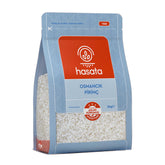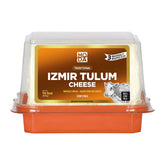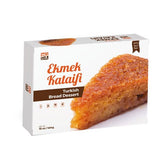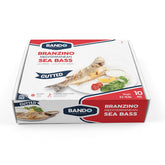A Culinary Journey Through Turkey: Regional Cuisines & Their Signature Dishes
A Culinary Journey Through Turkey: Regional Cuisines & Their Signature Dishes
Turkey's culinary heritage spans seven distinct geographical regions, each offering unique flavors shaped by local ingredients, climate, and cultural influences. From the olive oil-rich dishes of the Aegean coast to the hearty meat specialties of Eastern Anatolia, Turkish regional cuisine represents one of the world's most diverse food traditions.
This comprehensive guide explores the signature dishes, essential ingredients, and culinary traditions of each Turkish region—helping you discover authentic flavors and recreate traditional recipes at home.
Understanding Turkish Regional Cuisine
Turkish cuisine ranks among the world's top three culinary traditions, alongside French and Chinese cooking. The country's position bridging Europe and Asia, combined with its varied geography—from Mediterranean coastlines to mountain highlands—has created remarkably diverse regional food cultures.
What Makes Each Region Unique:
- Local climate and agricultural products
- Historical trade routes and cultural influences
- Traditional cooking methods passed through generations
- Seasonal availability of ingredients
Aegean Region (Ege Bölgesi)
Provinces: İzmir, Muğla, Aydın, Manisa, Denizli
Culinary Character
The Aegean region celebrates olive oil, fresh herbs, and vegetables in its Mediterranean-influenced cuisine. Known for lighter, healthier dishes featuring seasonal produce and seafood.
Signature Dishes
Zeytinyağlılar (Olive Oil Dishes):
- Enginar (Artichokes) - Fresh artichokes cooked in olive oil with dill and lemon
- Taze Fasulye (Green Beans) - Tender green beans in olive oil and tomato sauce
- Kabak Çiçeği Dolması - Stuffed zucchini blossoms with rice and herbs
İzmir Köfte: Meatballs served in tomato sauce with potatoes—İzmir's iconic street food
Boyoz: Flaky pastry from İzmir's Jewish community, perfect with morning tea
Alaçatı Otu (Wild Herbs): Foraged greens sautéed with olive oil, a springtime delicacy
Seafood Specialties:
- Çupra (Sea Bream) and Levrek (Sea Bass) grilled simply with lemon
- Midye Dolma (Stuffed Mussels) - street food classic
- Ahtapot Salatası (Octopus Salad)
Essential Aegean Ingredients
- Extra virgin olive oil (highest quality)
- Fresh herbs: dill, parsley, mint
- Aegean oregano (kekik)
- Fresh vegetables and legumes
- Local cheeses: Tulum, İzmir Tulum
Black Sea Region (Karadeniz Bölgesi)
Provinces: Trabzon, Rize, Giresun, Ordu, Samsun, Artvin
Culinary Character
Famous for anchovies (hamsi), corn-based dishes, and hearty greens. The rainy climate produces abundant hazelnuts and tea. Butter and cornmeal dominate instead of olive oil.
Signature Dishes
Hamsi (Anchovies) - The Regional Icon:
- Hamsi Tava - Pan-fried anchovies
- Hamsi Pilav - Anchovy rice pilaf
- Hamsi Buğulama - Steamed anchovies
- Hamsi Köfte - Anchovy patties The saying goes: "40 ways to cook hamsi!"
Mıhlama (Muhlama): Melted regional cheese with cornmeal and butter—comfort food at its finest
Karalahana Çorbası: Black cabbage soup, rich and nourishing for cold mountain winters
Kuymak: Creamy cornmeal and cheese mixture similar to polenta
Laz Böreği: Custard-filled pastry dessert, popular throughout Turkey
Essential Black Sea Ingredients
- Hamsi (European anchovies)
- Mısır unu (cornmeal)
- Karalahana (black cabbage/collard greens)
- Çay (Turkish tea from Rize)
- Fındık (Turkish hazelnuts—70% of world production)
- Kolot cheese (aged regional cheese)
Southeastern Anatolia (Güneydoğu Anadolu)
Provinces: Gaziantep, Şanlıurfa, Mardin, Diyarbakır, Adıyaman
Culinary Character
Turkey's spice capital, particularly Gaziantep, which holds UNESCO Creative City of Gastronomy status. Known for kebabs, spicy dishes, and spectacular baklava.
Signature Dishes
Kebabs:
- Adana Kebab - Spicy minced meat on skewers
- Urfa Kebab - Milder version from Şanlıurfa
- Ali Nazik - Kebab over smoky eggplant purée with yogurt
- Beyran Çorbası - Lamb and rice soup with garlic yogurt
Lahmacun: Thin crispy flatbread topped with spiced minced meat, herbs, and vegetables
Çiğ Köfte: Bulgur and spice mixture (traditionally raw meat, now commonly vegetarian)
Tepsi Kebabı: Oven-baked meat with vegetables and potatoes
Baklava: Gaziantep produces Turkey's finest baklava—thin layers of phyllo with pistachios
Sweet Specialties
- Künefe - Shredded phyllo with cheese, soaked in syrup
- Katmer - Flaky pastry with pistachios and kaymak (clotted cream)
- Şıllık - Grape molasses dessert
Essential Southeastern Ingredients
- Antep Fıstığı (Gaziantep pistachios—world's finest)
- Urfa Biber (Urfa pepper flakes—smoky, raisin-like)
- Pul Biber (Aleppo pepper)
- İsot (dried Urfa pepper)
- Bulgur (cracked wheat)
- Pekmez (grape molasses)
Mediterranean Region (Akdeniz Bölgesi)
Provinces: Antalya, Mersin, Adana, Hatay
Culinary Character
Influenced by Arabic and Levantine cuisines, especially in Hatay. Features olive oil, fresh vegetables, citrus, and seafood with bold, aromatic flavors.
Signature Dishes
Adana Kebab: Spicy hand-minced lamb on wide skewers—Adana's pride
Tantuni: Mersin's fast food: thinly sliced meat wrapped in lavash with onions and spices
Hummus & Mezze: Hatay's chickpea purées, baba ghanoush, and muhammara
Şakşuka: Fried eggplant and peppers in tomato sauce
Cezeriye: Carrot and walnut dessert from Mersin
Hatay Künefesi: Hatay's version of künefe, claimed to be the original
Essential Mediterranean Ingredients
- Fresh herbs: parsley, mint, cilantro
- Sumac (sumak)
- Tahini (tahin)
- Pomegranate molasses (nar ekşisi)
- Seven Spices Blend (yedi baharatı)
- Salça (tomato and pepper paste)
Eastern Anatolia (Doğu Anadolu)
Provinces: Erzurum, Van, Kars, Ağrı
Culinary Character
Harsh winters create hearty, warming cuisine featuring dairy, grains, and preserved meats. Famous for breakfast culture and artisanal cheeses.
Signature Dishes
Van Kahvaltısı (Van Breakfast): Legendary spread featuring 20+ items including regional cheeses, honey, kaymak, and preserves
Kars Gravyer (Gruyere): Swiss-style cheese produced in Kars since the 1900s
Çılbır: Poached eggs over yogurt with butter sauce—ancient dish gaining worldwide popularity
Kete: Sweet or savory pastries, especially from Erzurum
Erzurum Cağ Kebab: Rotating horizontal lamb kebab, predecessor to döner
Ayran Aşı: Hearty yogurt soup with chickpeas and bulgur
Essential Eastern Ingredients
- Otlu Peynir (herbed cheese from Van)
- Kars Kaşar (aged cheese)
- Kars Honey
- Wild mountain herbs
- Tarhana (fermented soup base)
Central Anatolia (İç Anadolu)
Provinces: Ankara, Konya, Kayseri, Sivas
Culinary Character
Wheat-based cuisine featuring pastries, dumplings, and dried meat. Known for mantı (Turkish dumplings) and conservative Ottoman-influenced cooking.
Signature Dishes
Mantı: Tiny dumplings filled with spiced meat, topped with yogurt and butter sauce
Etli Ekmek: Konya's boat-shaped flatbread topped with minced meat
Testi Kebabı: Meat and vegetables slow-cooked in sealed clay pots, broken tableside
Keskek: Ceremonial wheat and meat porridge, cooked for celebrations
Bamya Çorbası: Okra soup with tomatoes
Kayseri Pastırma: Air-dried beef cured with fenugreek paste—intense flavor
Essential Central Anatolian Ingredients
- Erişte (homemade egg noodles)
- Tarhana
- Pastırma (cured beef)
- Sucuk (Turkish sausage)
- Kavurma (preserved meat)
Marmara Region (Marmara Bölgesi)
Provinces: Istanbul, Bursa, Edirne, Balıkesir
Culinary Character
Ottoman palace cuisine's direct descendant. Istanbul serves as Turkey's culinary capital, blending all regional traditions with international influences.
Signature Dishes
İskender Kebab: Bursa's gift to Turkish cuisine—döner over pide bread with tomato sauce, yogurt, and butter
Kağıt Kebabı: Lamb cooked in parchment paper with vegetables
Midye Dolma: Istanbul's street food—stuffed mussels with spiced rice
Balık Ekmek: Fresh grilled fish in bread—Bosphorus classic
Edirne Tava Ciğeri: Fried liver from Edirne, crispy outside, tender inside
İmam Bayıldı: "The imam fainted"—eggplant stuffed with onions and tomatoes in olive oil
Börek Varieties
- Su Böreği - Layered phyllo with cheese
- Sigara Böreği - Cigarette-shaped fried pastry
- Kol Böreği - Arm-shaped spiral börek
Essential Marmara Ingredients
- Phyllo dough (yufka)
- White cheese (beyaz peynir)
- Fresh fish from Bosphorus and Marmara Sea
- Piyaz (white beans with tahini)
Essential Ingredients for Authentic Turkish Cooking
No matter which region inspires you, these pantry staples form the foundation of Turkish cuisine:
Spices & Seasonings
- Pul biber (Aleppo pepper flakes)
- Kırmızı biber (red pepper flakes)
- Kimyon (cumin)
- Sumac
- Mint (dried)
- Black pepper
Pastes & Sauces
- Biber salçası (pepper paste)
- Domates salçası (tomato paste)
- Tahini
- Pomegranate molasses
Grains & Legumes
- Bulgur (multiple sizes)
- Turkish rice
- Red lentils
- Chickpeas
- White beans
Dairy
- Turkish yogurt
- White cheese (beyaz peynir)
- Kaşar cheese
Specialty Items
- Turkish tea (Çaykur)
- Turkish coffee
- Grape molasses (pekmez)
- Olive oil
Cooking Tips for Authentic Turkish Flavors
1. Don't Skip the Salça (Paste): Tomato and pepper pastes provide depth—toast them in oil before adding liquid
2. Yogurt is Essential: Turkish yogurt is thicker and tangier—use full-fat Greek yogurt as substitute
3. Fresh Herbs Matter: Add fresh parsley, dill, and mint generously at the end
4. Master the Pilaf: Rice should be fluffy with separate grains—rinse well and use the absorption method
5. Slow Cooking Wins: Many Turkish dishes benefit from gentle, prolonged cooking
Why Turkish Regional Cuisine Matters
Understanding Turkish regional cuisines offers more than recipes—it connects you to:
- Centuries of tradition passed through generations
- Seasonal eating aligned with nature's rhythms
- Community values where food brings people together
- Mediterranean diet benefits scientifically proven for health
- Cultural identity for Turkish diaspora communities
Start Your Turkish Culinary Journey Today
Ready to bring authentic Turkish regional flavors to your kitchen? Whether you're craving the olive oil dishes of the Aegean, the spicy kebabs of the Southeast, or the comforting cheese preparations of the Black Sea, having quality ingredients makes all the difference.
Shop Authentic Turkish Products: Browse our collection of regional specialties, from Gaziantep pistachios to Rize tea, Urfa pepper to Aegean olive oil. Every ingredient tells a story of Turkey's rich culinary heritage.













